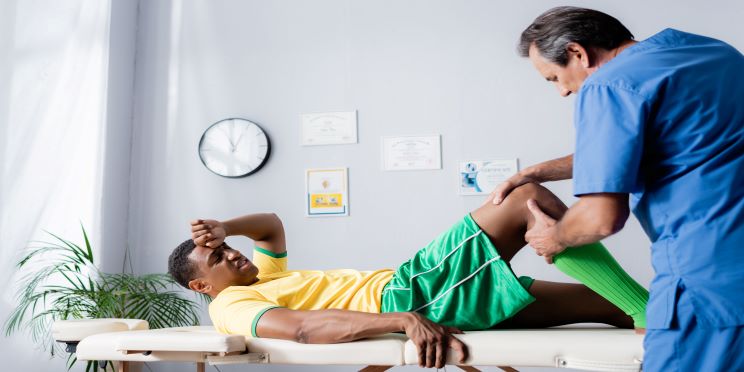Posterior cruciate ligament injury treatment
In most cases of posterior cruciate ligament injury, surgery is not necessary. Still, the treatment of the condition depends on how severe the injury is and how recently it occurred. Common non-surgical treatments for posterior cruciate ligament injuries include medications, therapy, and rest.
- Therapy: Physical therapy is sometimes recommended as a treatment of posterior cruciate ligament injuries to help increase the strength of the knee’s supporting muscles and improve the knee’s stability and functional movement.
- Rest: Sometimes, a physician recommends the avoidance of weight-bearing on a knee that has suffered posterior cruciate ligament injury or support for the joint as a part of the treatment. Patients are sometimes required to walk with crutches or wear a brace until healing takes place.
Posterior cruciate ligament injury medications
Non-prescription nonsteroidal anti-inflammatory drugs (NSAIDs) like naproxen and ibuprofen can help control pain and relieve swelling associated with posterior cruciate ligament injuries.
Non-surgical procedures for posterior cruciate ligament injury
Joint aspiration is a procedure during which excess fluid accumulated due to inflammation is drawn out of the joint. It relieves pain and swelling associated with PCL injuries. It is usually done in cases where excessive swelling in the joint restricts movement of the knee.
Surgery for posterior cruciate ligament injury
Sometimes the patient suffering from posterior cruciate ligament injury may need surgery for ligament reconstruction. It is a case when the condition is associated with other knee injuries, such as damage to the cartilage, a broken bone, or other torn ligaments. Surgery is also sometimes recommended in cases of recurrent instability of the knee despite rehab. Micro-surgery also called arthroscopic surgery, is usually successfully used to repair the posterior cruciate ligament.
Useful advice
If you sustain a mild to moderate injury to a joint, your healthcare provider may recommend treating it following the “R.I.C.E.” method:
- Rest. Stop working your injured joint to prevent further injury. If you have sustained a posterior cruciate ligament injury, you may need to walk on crutches.
- Ice. Cold helps to reduce swelling and inflammation of an injury. Ice packs can be used to your injury for 15 to 20 minutes several times daily. Always wrap ice or an ice pack in a towel or pillowcase – never place it directly on bare skin.
- Compression. It also helps reduce swelling and can assist in supporting your knee. If you have a posterior cruciate ligament injury, your physical therapist might recommend a knee brace.
- Elevation. Elevate your knee to help decrease swelling. Prop your leg on several pillows while lying down. Alternatively, you can sit in a recliner with the knee above the level of your heart.
PCL injury complications
When a posterior cruciate ligament injury occurs, other knee structures like cartilage or other ligaments are also injured. As a result, long-term instability of the knee and ongoing pain may develop. In addition, people who have injured their PCL may also be at increased risk of developing arthritis in the injured knee joint later in life.
















Leave a Reply
You must be logged in to post a comment.